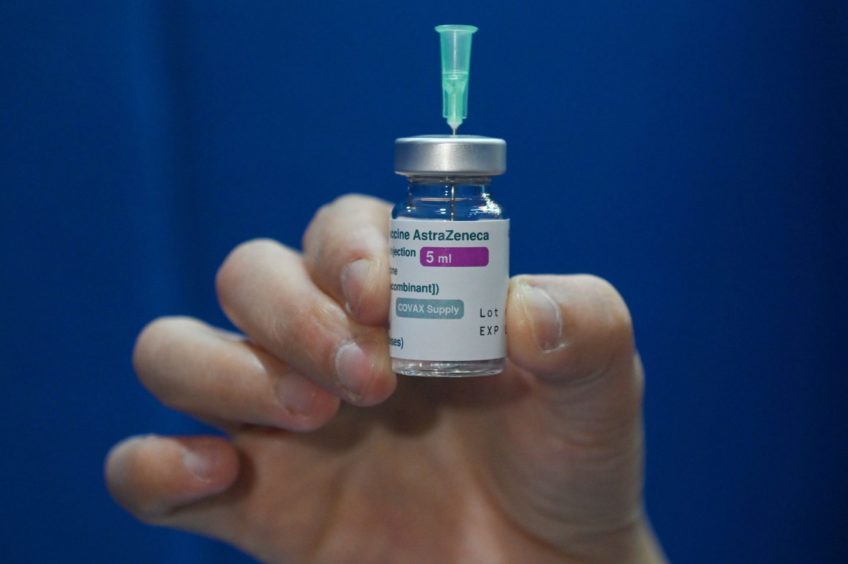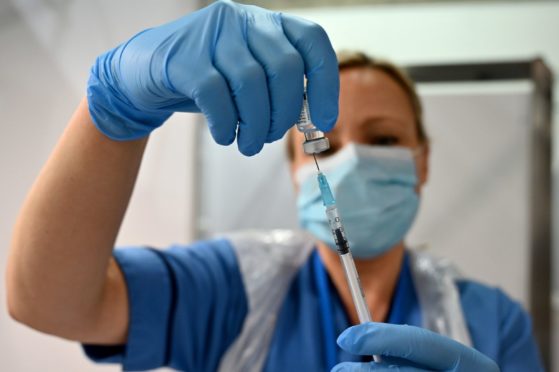All adults across Scotland have now been invited for their first Covid jag and many are keen to get their second as soon as possible. But what are the rules around mixing vaccine brands?
Three vaccines requiring two doses have been approved for use in the UK — AstraZeneca, Moderna and Pfizer.
But can you have one if you’ve already been vaccinated with another? And how will this work if we all need booster jags later in the year?
We’re answering all your questions about mixing and matching the Covid-19 vaccine.
What does mixing vaccines mean?
Mixing vaccines means getting one brand for your first dose and a different brand for your second.
For example, it could mean having the Pfizer vaccine for dose number one and Moderna for dose number two.

Nicola Sturgeon previously said vaccine doses would not be mixed in Scotland, apart from “exceptional circumstances such as we don’t know what vaccine was given in the first dose”.
Why would we mix Covid-19 vaccines?
Mixing vaccines could be useful if there are ever issues with supply in the future.
And some research even suggests mixing brands could improve immunity.
A study carried out by Oxford University found mixed schedules involving Pfizer and AstraZeneca generate a strong immune response – particularly if AstraZeneca is used for the first dose, followed by a dose of Pfizer four weeks later.
The World Health Organization (WHO) has advised decisions over mixing and matching the vaccine “should be left to public health authorities”.

However, in June their Strategic Advisory Group of Experts on vaccines said the Pfizer vaccine could be used following an initial dose of AstraZeneca if the latter is unavailable.
What about for booster vaccines?
Though there is no official news yet on the Scottish Government’s plans for booster vaccines, a trial has been launched in Glasgow which could be rolled out more widely if successful.
Participants of the trial will receive one booster jag – either a placebo or a vaccine. Those who get the vaccine could be given a different brand to the one they received for their first two doses.
The trial is thought to be the first study in the world to investigate the impact of a third dose on participants’ immune responses.
Which countries are mixing vaccines?
Some countries have allowed the mixing of Covid-19 vaccines to try and speed up the vaccination programme and reduce the number of cases.
Italy, Canada, Thailand, South Korea and the United Arab Emirates are a few of the countries who have approved vaccine mixing.
It was our turn to get vaccinated today, so that’s what Sophie and I did – and we’re glad we did it! Find out how, when, and where you can get your shot: https://t.co/3UJJt9jpqz pic.twitter.com/HgO2GTZheN
— Justin Trudeau (@JustinTrudeau) April 23, 2021
Canadian Prime Minister Justin Trudeau, German Chancellor Angela Merkel and Italian Prime Minister Mario Draghi are some of the world leaders who have received mixed doses.
Some countries, such as Spain and Germany, chose to offer Pfizer or Moderna as a second dose to those who’d received AstraZeneca as a first dose, following concerns over blood clots.
Will this happen in Scotland?
A Scottish Government spokesperson says: “The Chief Medical Officer and Chief Pharmaceutical Officer do not support using different vaccines for first and second doses before research examining this has reported its conclusions.
“We have advised Health Boards we do not believe mixing vaccines should be part of our response at this time.
“It is our intention that people receive the same vaccine for their first and second dose – based on the current MHRA and JCVI advice.”
